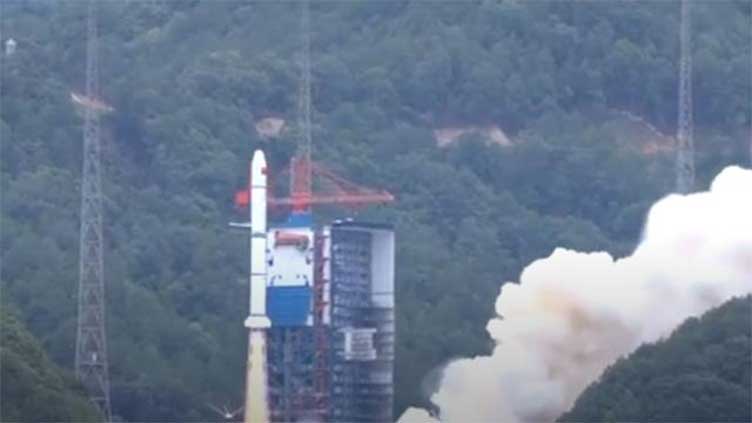Rocket debris fall on populated area as China, France launch satellite

Technology
This mission will help understand cosmic explosions and the secrets of the universe
(Web Desk) - China and France set off on a mighty explosion toward the universe when they launched the joint Sino-French SVOM mission.
Their aim was to study Gamma-ray bursts that coincided with an event where toxic debris from a rocket reportedly fell over a populated area.
The China Aerospace Science and Technology Corporation (CASC) declared the launch as a successful one, soon after the liftoff.
According to the timing of rocket launch, it may be ascertained that the debris fall happened around the same time, however, CASC is yet to make any comment on the incident.
Weighing around 930 kg, the satellite carried four instruments. Among these two were French and the other two Chinese.
The satellite took off around 07.00 GMT aboard a Chinese Long March 2C rocket from a base in Xichang.
Engineers from both the countries had developed the Space Variable Objects Monitor (SVOM). This Space Variable Objects Monitor (SVOM) will help find the gamma rays – the ones using which light travelled billions of light years to reach Earth.
It’s noted that Gamma-ray bursts mostly happen when huge stars explode. A huge blast of energy is created from the extremely bright cosmic beams. The energy exuded is more than that of a billion suns.
Ore Gottlieb, an astrophysicist at the Flatiron Institute’s Centre for Astrophysics told international news agencies that it feels like looking back in time. He shared that observing them is like looking back in time. That is because the light from these objects usually takes a longer time to reach us.
The Gamma-rays mostly consist of traces of gas clouds and galaxies, these reveal valuable data regarding the universe that helps understand it better. Gottlieb added that SVOM has the potential to unravel several mysteries of the gamma-ray bursts.
These include detecting the gamma-ray bursts which are the most distant. It also helps identify which ones correspond to the earlier ones. The experts revealed their fondness for gamma-ray bursts since those are extreme cosmic explosions. They allow the researchers to analyze why certain stars died.
This data could even help understand the composition of space better, as well as the other galaxies.
Even though this seems like a successful and commendable effort this wouldn’t be the first time that China and France collaborated. In 2018, the two countries together launched an oceanographic satellite called CFOSAT.
Along with this several European countries too took part in China’s Change’s lunar exploration program. This means that SVOM isn’t unique but its significance can’t be undervalued.


